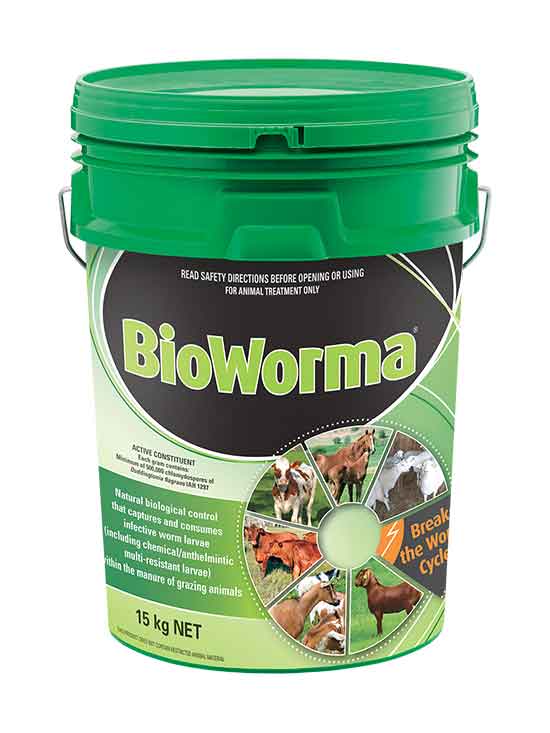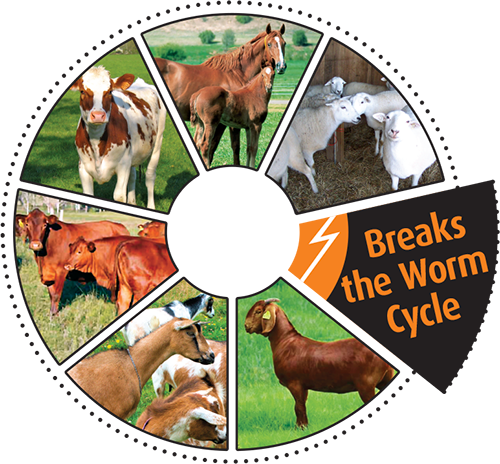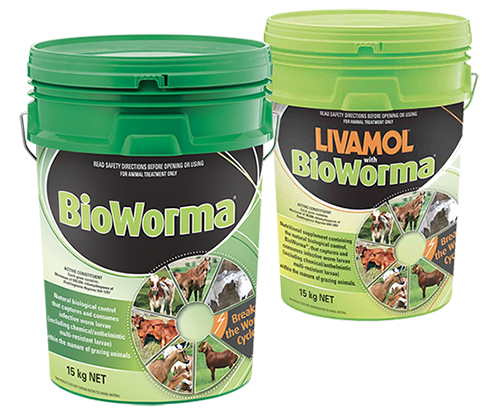About BioWorma®
A natural biological control that captures and consumes infective worm larvae (including chemical resistant/anthelmintic multi-resistant
larvae) within the manure of grazing animals.
Usage & Efficacy
Pack sizes: 2 kg, 7.5 kg, 15 kg / 15 lbs*, 30 lbs*
DIRECTIONS FOR USE
Dosage and Administration: Dose BioWorma® according to bodyweight.
- For best results, treat animals with a suitable chemical wormer/anthelmintic.
- Ideally, where possible, move the treated animals onto low worm pasture (that is, pasture that has not been grazed by the same animal species for a minimum 6 weeks).
- The most worm susceptible are young animals (from 3 months up to 18-24 months of age) and periparturient females (last month of pregnancy and while producing milk) as they are the most likely to have less resistance to worm infestation due to low immunity. Pasture contamination by adult stock, even with low faecal egg counts (FEC), should not be underestimated considering the volume of faecal material they place on pasture.
- Commence daily feeding of BioWorma® to minimise pasture infectivity and maintain the animal’s low worm status. The product will not reduce pre-existing larval pasture contamination. Thoroughly mix BioWorma® with feed or feed supplements.
- BioWorma® will begin to work immediately within the manure of treated animals, and for best results may be fed continuously when climatic conditions are conducive to BioWorma® and parasitic nematode activity.
- BioWorma® is recommended for strategic use during periods when weather conditions are conducive to larval development and transmission onto pasture at temperatures above 5° Celsius (40° Fahrenheit).
- Use in conjunction with a recommended worm management strategy for your area by contacting your Veterinarian, Animal Health
Advisor or Government Advisory groups for a strategic Integrated Parasite Management (IPM) plan. It is important to
consider the principles of refugia.
Visit: Wormboss for Australia OR Wormwise for New Zealand - Faecal egg counts (FECs) may be useful to monitor the effectiveness of the worm management strategy. Other options may include faecal egg count reduction test (FECRT) and/or identifying worm species by using faecal larval cultures (FLC).
For oral administration. The required amount of BioWorma® should be thoroughly mixed into feed, supplements, premixes, concentrates
or loose mixes. See datasheet for daily feeding rates.
Duddingtonia flagrans (the active ingredient in BioWorma®) reduces the number of gastrointestinal nematodes (GIN) larvae on pasture, which is significantly
greater than a chemical wormer can do within the animal (overall averages below):
84% - HORSES | 81% - CATTLE | 86% - GOATS
| 68% - SHEEP
Studies conducted by International Animal Health Products Pty Ltd
CSIRO - Collaboration partner of IAHP in the development of BioWorma® and Livamol® with BioWorma® and discoveror of D. Flagrans










